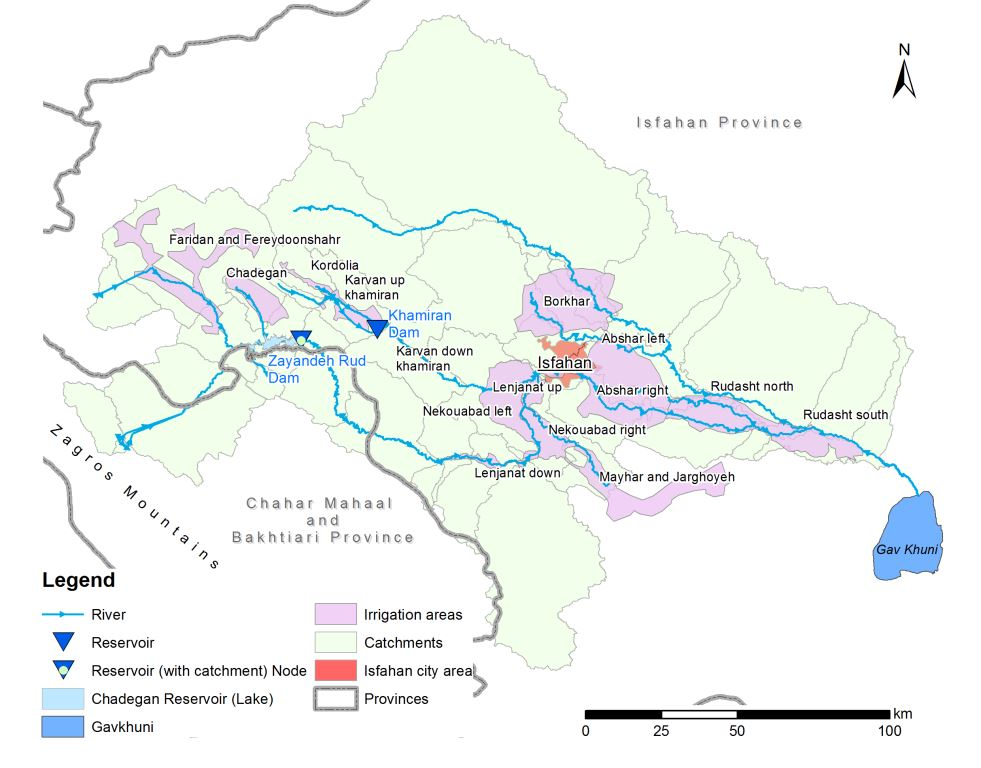Chances and problems of regional growth
The steady growth of the region, coupled with the onset of climate change, have taken their respective tolls, leading to increasing water management challenges. While water demand rises, the Zayandeh Rud’s water resources decrease and with them the livelihood of people and important ecosystems dwindle. Temperatures have been rising constantly, while annual rainfall has been declining.
Up until a few years ago the river dominated the cityscape of Isfahan, one of the major cities in Iran with UNESCO World Heritage Sites. Its historical bridges and little canals were famous tourist attractions and places of recreation for young and old alike. Numerous species of birds migrate there for the winter in the region around the Gavkhuni Salt Lake and even ventured into the city centre. For flamingos the salt lake was an ideal habitat. Because of its importance for migratory birds the salt lake was acknowledged as a UN Ramsar Convention site.



